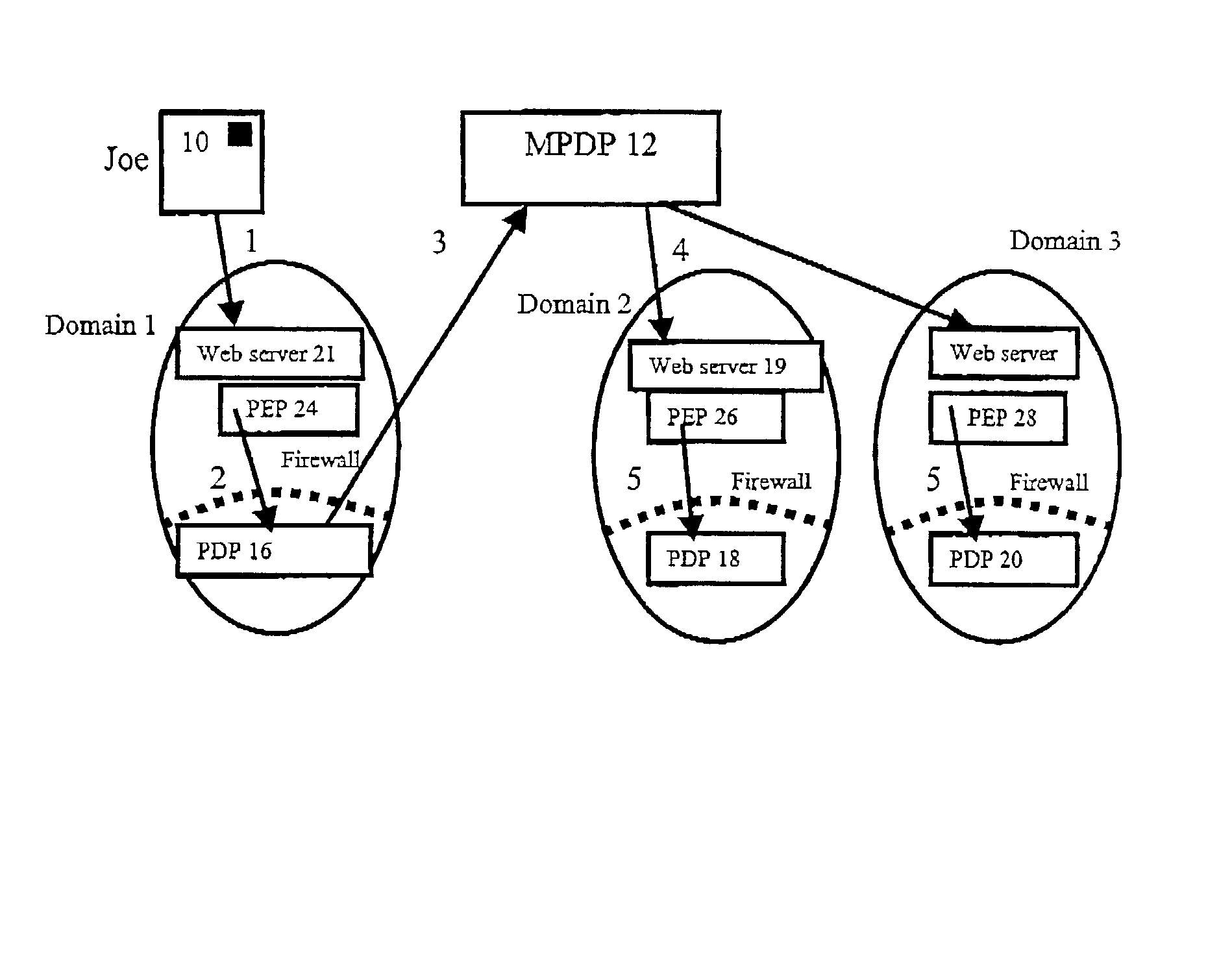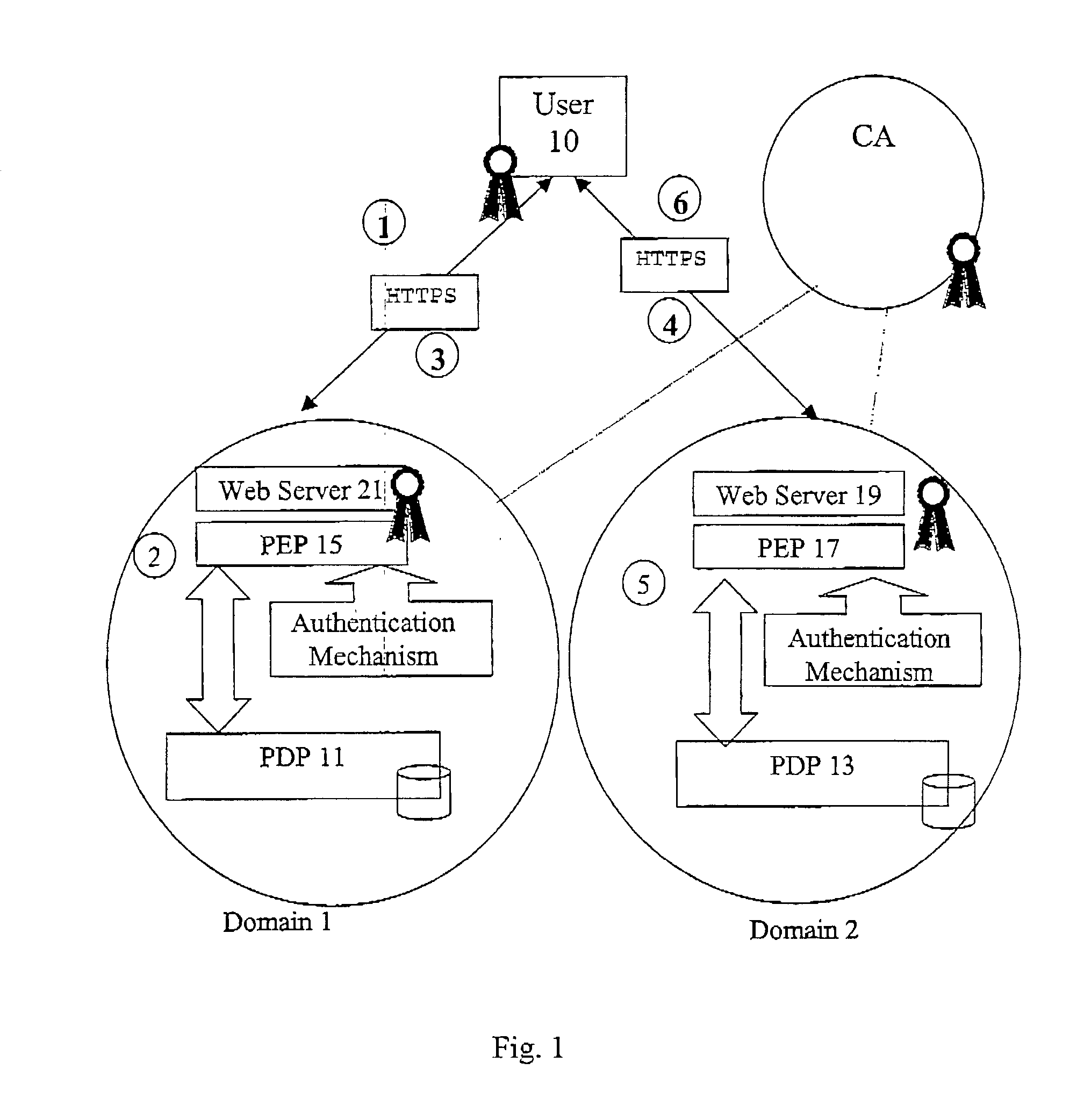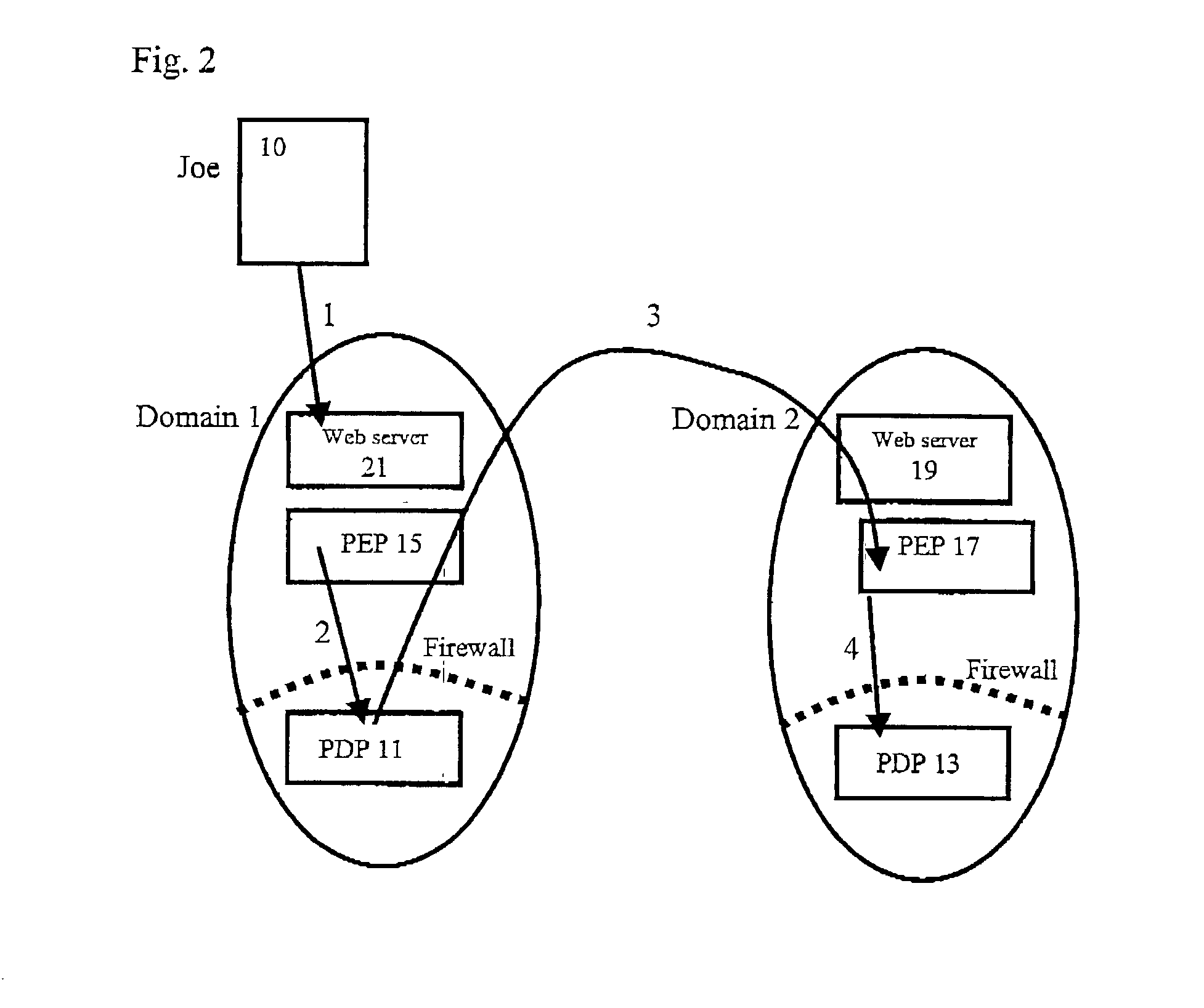Multi-domain authorization and authentication
a multi-domain authorization and authentication technology, applied in the field of computer networks, can solve the problems of imposing a performance overhead on the computer, difficult to implement, and cookies that do not work well across domains
- Summary
- Abstract
- Description
- Claims
- Application Information
AI Technical Summary
Problems solved by technology
Method used
Image
Examples
Embodiment Construction
[0102] In order to address the problem of a user 10 having to remember multiple passwords and having to remember to update multiple pages of registration information, a system for the management of a person's online persona is used. The system is called a meta Policy Decision Point (MPDP) 12 (see FIG. 3).
[0103] Put briefly, when a user 10 registers with Domain 1, instead of providing the URLs (universal resource locators) for his bark's policy decision point (PDP), he provides the URL of his MPDP 12. The user having already registered his bank's URL with the MPDP. When a first domain, Domain 1 PDP 16 needs authorisation information from a third party it sends a certificate request message format (CRMF) request containing the attributes that need to be authorised to the MPDP 12 that the user 10 gave when he registered in Domain 1. The user's MPDP 12 can either return the attributes directly or redirect the request to the appropriate PDP 18, 20. This is shown in FIG. 3. It is possible...
PUM
 Login to View More
Login to View More Abstract
Description
Claims
Application Information
 Login to View More
Login to View More - R&D
- Intellectual Property
- Life Sciences
- Materials
- Tech Scout
- Unparalleled Data Quality
- Higher Quality Content
- 60% Fewer Hallucinations
Browse by: Latest US Patents, China's latest patents, Technical Efficacy Thesaurus, Application Domain, Technology Topic, Popular Technical Reports.
© 2025 PatSnap. All rights reserved.Legal|Privacy policy|Modern Slavery Act Transparency Statement|Sitemap|About US| Contact US: help@patsnap.com



